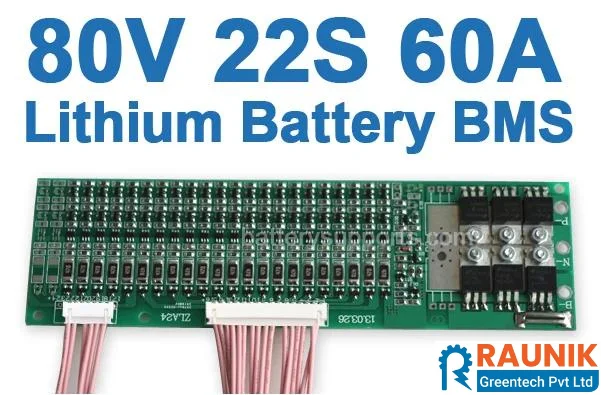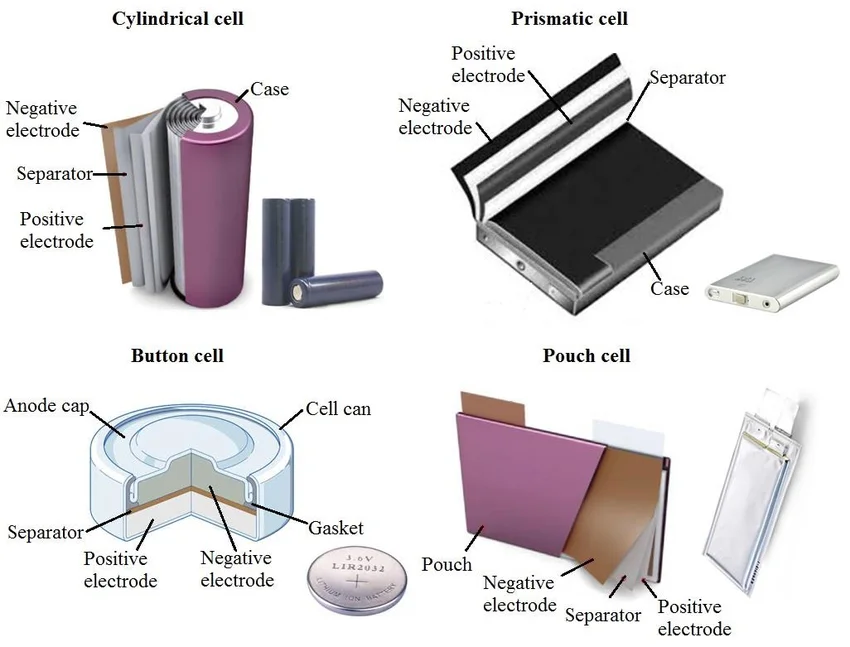
In recent years, the use of Lithium-ion has increased dramatically. They have a numerous advantages and advances over other battery technologies. To get the most out of Lithium-ion battery technology, you must understand not just the benefits, but also the restrictions and drawbacks. As a consequence, people might be assigned to jobs that best represent their strengths. Advantages and Disadvantages of Lithium-Ion Battery
Advantages and Disadvantages of Lithium-Ion Battery
What is Lithium-Ion Battery?
Lithium Ion battery is a kind of rechargeable battery. In this battery during discharge, flow of Li ions take place from the anode (A) to the cathode (C) and during charging from the cathode to the anode.
It is mostly Mobile Phones Use Lithium Batteries and computers because of its high energy density and lightweight. By the use of a separator, it is identical to a lead-acid battery.
The most major difference between Lithium and Lithium-ion batteries is that Lithium batteries are mono-use and you can not charge iy. Because lithium-ion batteries are rechargeable and may be charged and drained many times, they can be used endlessly.
Application Of Lithium-Ion Battery
Applications of lithium-ion batteries are:
● Aerospace
● Industrial application
● Tele-communication
● Power source for electric or hybrid electric vehicle
● Electronic gadgets
Lithium-Ion Battery Management System
Lithium ion batteries and cells have a shorter life expectancy than other rechargeable tech. They must be protected from being overloaded and released excessively. The current must also be kept within acceptable parameters. As a result, one disadvantage of lithium-ion rechargeable batteries is that they necessitate safe technologies to ensure that they remain within their operating parameters.
Thankfully, modern embedded system technology allows this to be easily placed into the battery or, if the battery isn’t replaceable, the device.. Because the battery management circuitry is incorporated, li-ion batteries can use it without any special understanding. They can be charged until the battery is fully charged, at which time the charger will switch off the power.

Lithium ion batteries include an installed battery management system that monitors several elements of their operation.
During charging, the protective circuit regulates the maximum voltage of each cell since too much voltage can destroy the cells. Because there is usually only one link for a battery, they are usually charged in parallel. Because various cells require varying degrees of charge, one cell may experience a greater than appropriate voltage.
The battery monitoring or protective circuitry also keeps the cell voltage from falling too low during discharge. This can occur if one cell on the battery can hold less power than others and its power runs out before the others. You might wanna check this one too Lithium-Ion Battery VS Lithium-Polymer Battery
The cell temperature is also monitored as part of the battery management design to prevent high temperatures. On most batteries, the maximum charge and discharge current is given at 1°C to 2°C. However, with rapid charging, some devices can get a little heated.
Types of Lithium Ion Cell
Types Of Lithium-Ion Batteries Available In The Market in different forms and sizes. This efficiency of lithium-ion batteries could indicate that the right tech is being employed for different jobs. Because some lithium-ion batteries have a high current density, they’re ideal for consumer electronics. Others may be capable of delivering even higher currents, making them ideal for power tools and electric cars.
For some applications, there may be further benefits to using lithium-ion batteries and cells..For many applications, a single cell with an operating voltage of more tanh 3 volts may be enough. In the vast majority of cell devices, a single cell is used. Other applications may have their own set of criteria for determining if a lithium-ion battery or cell should be used in a connected device or for electrical use.

Because of the benefits of lithium-ion cells and batteries, they are progressively being used in a variety of applications, ranging from low-power applications including incorporation in small, low-power electronic designs to much bigger and higher-current applications such as electric vehicle batteries.
Lithium-ion batteries are poised to help address this demand as the demand for electric power for smartphones grows.
Nickel cadmium cells and batteries are no longer utilised due to their negative effects on the environment, and nickel-metal hydride cannot achieve the charge levels required for several applications.
Advantages Of Lithium-Ion Battery
The use of a lithium-ion battery cell has a lot of advantages. As a consequence, tech is being employed for a variety of applications all the time. Everything from small electrical devices to computers and cellphones, as well as autos and other applications.
It’s critical to weigh the advantages of a lithium-ion battery over a lead-acid battery while making a decision and you can also read Lithium-Ion Battery Charge and Discharge
High Energy Density
Cell Voltage
Low Maintenance
Load Characteristics
Self-Discharge
No Need of Priming
Disadvantages of Lithium-Ion Battery
For any technology, there are some downsides to consider in addition to the advantages. Lithium-ion batteries and cells aren’t perfect, and they have several shortcomings.
Despite the fact that lithium-ion battery science contains flaws, it is not impossible to overcome or at the very minimum mitigate these flaws and achieve remarkable performance.
Realizing the weaknesses allows for remedies to be built into the electrical equipment, for example, to lessen the impact of the faults.
Some of the drawbacks of lithium-ion batteries are as follows:
Transportation
Cost
Ageing
Developing Technology
Main Uses Of Lithium-Ion Batteries
The following are some of the most common applications for lithium-ion batteries:
● It supplied on-the-go power.
● It supplied electricity backup in the event of a power outage or fluctuation.
● It serves as a power supply for electric vehicles and is in high demand in the automotive sector.
● They can also be used in solar panels to store solar energy.

